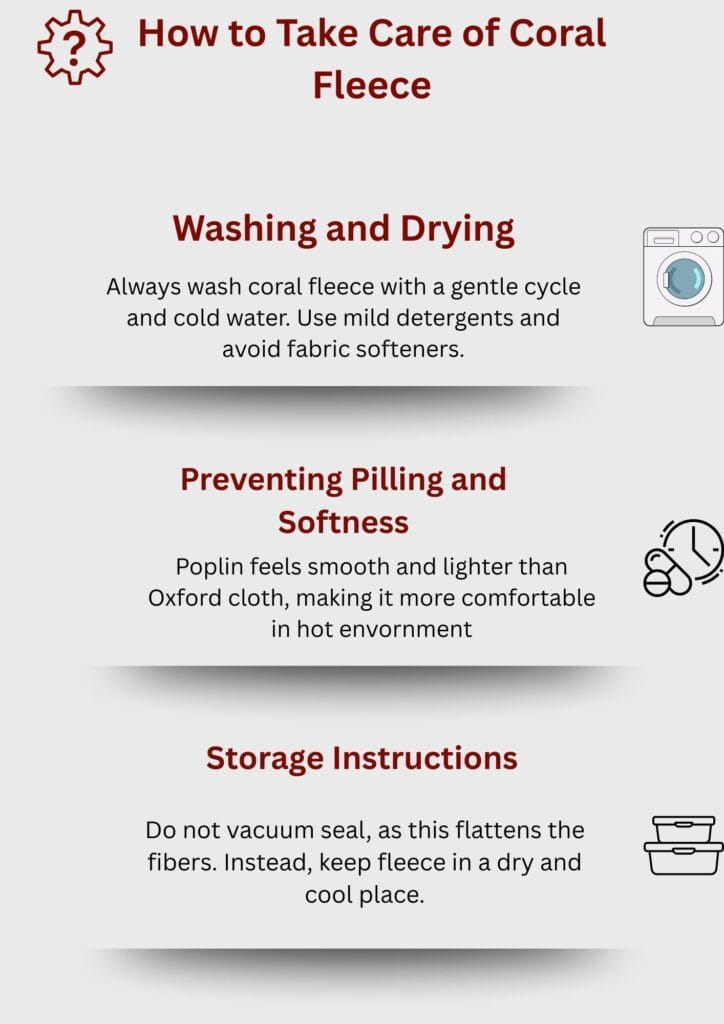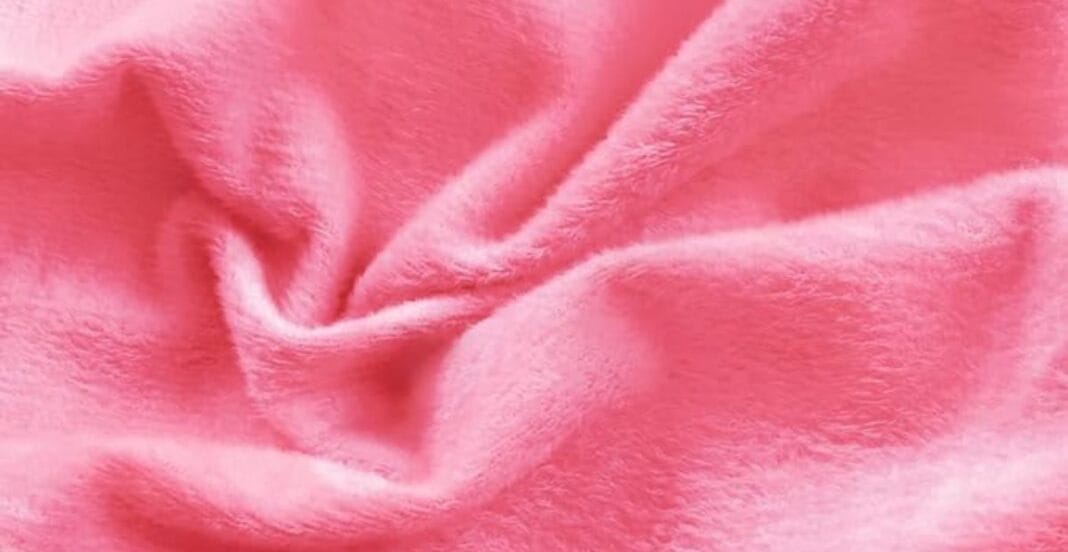Introduction
Definition of Coral Fleece
The phrase fleece fabric might call to mind the warm fleece garments seen on children and those of middle age. Women and children tend to love it the most. The flimsy and insubstantial nature of the fabric is what has made it so easy to manufacture. The fabric is appreciated a lot for the softness it boasts.
It’s because people wish to explore new and delightful items that the internet almost always has on display. Fleece fabric is a pleasant surprise, especially for those who would have deemed it out of budget due to the pricy alternatives like wool or cashmere. Fleece fabric is real love for those who adore comfy and warm dresses. Those that work in technology are the ones who are popular in making new kinds of garments in the shaping of fleece fabric.
Brief History and Origins
Coral fleece appeared in the early 2000s as a more modern alternative to traditional. With advancements in fabric engineering, manufacturers sought to create an expensive, softer version of fleece. This led to the launch of coral fleece in East Asia and then the rest of the world.
Why Is It Called “Coral” Fleece?
“Coral” in coral fleece is for the appearance of the fabric. It resembles coral reefs which are fine, soft and slightly bumpy. This resemblance is what helped differentiate it from other fleece types like polar fleece or sherpa fleece. The name “coral” adds to its premium feel as well as evokes the softness of marine sponges and velvety textures.
There is no direct relation to marine life, but the name helps market it as an unbeatably soft fabric in the industry.
How is Coral Fleece Made? All You Need to Know About Its Production
Materials Used (Usually Polyester)
Coral fleece is often composed of pure polyester 100%. Polyester is a synthetic fiber extracted from compounds made from crude oil. Polyester is selected for its durability and flexibility and its ability to retain softness after a good number of washes. Sometimes, secondary fibers like cotton may be blended with polyester to increase softness and stretch.
Manufacturing Process
After weaving, the fabric is brushed to separate the fibers and to create the soft, fluffy look coral fleece is famous for.
Most importantly, the coral fleece fabric is brushed and form-smoothed, dyed, heat, and treated against pilling to ensure the fleece material is soft to the touch, bright to the eye, and resilient..
Characteristics & Properties of Coral Fleece: What Makes It So Special
Softness and Texture
Coral fleece is often regards as the softest type of fleece. It produces a soft, fluffy fibers, which means it feel velvety and plush making it easy to snuggle to. Brushed fibers form a fluffy layer that is soothing to touch, which is gentle even to the softest skin.
This lavish feel is a big reason why people love corals for babies and for loungewear.
Warmth and Insulation
Warmth is made coral fleece offers unrivaled insulation. Its thickness captures heat while still being lightweight. This is an ideal feature for the winter, making it perfect for blankets, jackets, and robes.
Coral fleece will keep you warm, and unlike other coral materials, it does not add any weight.
Breathability and Moisture-Wicking Properties
While not as efficient as cotton, coral fleece breathes well. Light moisture is not an issue for coral fleece as it is able to wick it away. With microfleece being breathable, it is better for apparel that keep you cool while provides comfort and microfleece moisture.
Durability and Pilling Resistance
Coral fleece is actually quite tough. It is less likely to pill than most other fleece fabrics, especially with the right treatment. With frequent use and washing, coral fleece continues to be soft and well-shaped.
It’s tough fibers can endure decades of use.
Common Uses of Coral Fleece in Everyday Life
Blankets and Throws
Due to their heat retention and soft texture, coral fleece blankets and throws are popular in an everyday setting. They are available in different sizes, colors, and patterns, which make them a functional and an aesthetically appealing home accessory.
Their usage is multifunctional whether on a bed or a couch and can provide comfort on an instant.
Winter Clothing (Hoodies, Jackets, Pajamas)
Cold weather apparel includes coral fleece hoodies, jackets and pajamas. These products are ideal for lounging at home or during the colder months as they are easy to layer. Most importantly, they aid in effortless warmth.
Casual clothing is elevated by the soft texture of the upholstery which bestows a luxurious feeling.
Baby Products (Swaddles, Onesies)
Coral fleece is gentle in texture, which makes the fabric ideal for baby swaddles, blankets and fleeced onesies. The material is appreciated by parents as it keeps infants warm while also being gentle to soft skin. Additionally, parents are happy as these products are easy to maintain.
Home Décor (Pillow Covers, Robes)
Aside from clothing, these products coral fleece bathrobes which can be paired with pillow covers and bedspreads. The use of these fleeces is to provide a cozy aesthetic to the home which proves to be inviting in any living space.
Benefits of Coral Fleece

Warm While Remain Lightweight
Coral fleece is known for its warmth-to-weight ratio. It provides excellent insulation without being heavy. This makes it a go-to fabric for layering or lounging.
Friendly To The Skin And Hypoallergenic
Coral fleece does not contain irritants like natural fibers such as wool. This makes it hypoallergenic, for people with a history of allergies or sensitive skin.
Easy to Care For (Machine Washable)
It can be machine washed along with other laundry. It also dries fast which is another advantage. The fabric is not prone to shrinkage or any wrinkling, which makes it a good choice.
Affordable Compared to Natural Wool
This makes it handy to families, students, or anyone in search for comfort without too much of a cost.
Disadvantages of Coral Fleece: Points to Consider
Environmental Concerns (Microplastics, Synthetic Fabric)
The fabric can release micro-plastics during washing which poses a threat to marine life. This is a concern for eco-friendly consumers.
Not As Breathable As Natural Fabrics
While providing warmth, it can retain heat and moisture, which is not favorable for activewear.
Potential Static Buildup
This can cause clinginess and discomfort. The use of anti-static sprays and dryer sheets can help reduce static cling.
Coral Fleece vs. Other Fabrics: A Head-to-Head Comparison
Coral Fleece vs. Cotton Fleece.
Cotton fleece is natural, breathable, and soft, but it is not as insulative as, while cotton fleece is versatile for year-round wear, it is poor in winter.
Coral Fleece vs. Wool
Wool garments are usually breathable and warm but can be itchy and expensive. Wool is more expensive than fleece, not as warm as and more difficult to care for.
Coral Fleece vs. Microfleece
Microfleece is more breathable because it is thinner, making it better for active use. Thicker provides more comfort and warmth.
How to Take Care of Coral Fleece

Washing and Drying
Always wash coral fleece with a gentle cycle and cold water. Use mild detergents and avoid fabric softeners. For best results, tumble dry on low or air dry.
Preventing Pilling and Softness
Prevent pilling by not washing with rough fabrics like denim. Pick low heat to dry. Wash items inside out and air dry to maintain softness and prevent pilling.
Storage Instructions
Do not vacuum seal, as this flattens the fibers. Instead, keep fleece in a dry and cool place.
Sustainability & Environmental Impact of Coral Fleece
Is coral fleece eco-friendly?
Due to its synthetic structure, coral fleece is not eco-friendly. Still, some brands offer recycled versions made out of plastic bottles.
Microplastic Fleece Concerns
Using a microfiber-catching laundry bag can help reduce this pollution.
Alternatives (Recycled Polyester Fleece)
Recycled polyester coral fleece offers a more sustainable option. It retains the same comfort while helping reduce environmental impact.
Where to Buy High-Quality Coral Fleece Products
Best Brands for Coral Fleece
Notable retailers like Uniqlo, Room Essentials at Target, and AmazonBasics have. Make sure to check reviews and description on the fabric.
Online vs. In-Store Shopping Tips
Physical locations allow you to get a feel of the fabric, while online stores have greater selection and variety. Look for sellers with good return policies if you are buying online.
How to Identify Good-Quality Coral Fleece
It should not feel scratchy or thin. Check the fabric weight (measured in GSM) higher GSM usually means better quality.
Conclusion
It is readily apparent why households around the globe have adopted coral fleece as a favored fabric; one only has to look at its numerous advantages. From its soft texture to warmth and even lightweight and hypoallergenic qualities.The fabric is suitable for pajamas, blankets, and even baby clothes, all of which are easily affordable, of good quality, and convenient.
Making informed decisions is only possible when one understands the fabric in question, and this is true for coral fleece as well. While there are some environmental drawbacks and static creation, the use of eco-friendly materials such as recycled polyester fleece easily solves these concerns.
FAQs
Absolutely, coral fleece retains heat and offers a snug feeling, making it excellent during winter.
Following proper care instructions ensures it does not shrink.
Yes, its soft characteristic along with its hypoallergenic nature makes it ideal for infants.
Minky is slightly heavier and more expensive but has comparable softness. Coral fleece is more affordable and easier to maintain.


